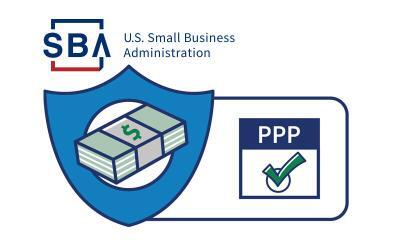There are more advantages to the CARES Act than just relief funding that can help your small business save money and those come in the form of tax breaks. Although most of the breaks are temporary, it’s important to take advantage of all that’s being offered to business owners now, so your company has the best chance of coming out of the pandemic healthy and if not profitable, at least in recovery mode.
Here are nine tax breaks and benefits you and your employees can take advantage of today.
Tax Benefits For Your Business
1. Delayed Payroll Tax Payment
As an employer, you can choose to defer payment of the business’s share of the Social Security tax on wages during the period from March 27 through December 31, 2020. This is not a break, but the deferral can help with a business’s cash flow. The employer must pay half of the deferred amount by December 31, 2021, and the other half by December 31, 2022. The self-employed can also defer 50 percent of the self-employment tax they owe.
Take note: Any employer who receives a notification of PPP loan forgiveness must immediately stop deferring the Social Security payroll tax.
2. Employee Retention Tax Credit
To take advantage of this fully refundable tax credit, your business must have had to fully or partly suspend business operations during any quarter in 2020 because of the pandemic or the business’s gross receipts have significantly declined because of the pandemic. The tax credit is equal to 50 percent of employee wages from March 12, 2020 to before January 1, 2021. Self-employed persons are not eligible for this tax credit.
Take note: You can not take the employee retention tax credit if your business received PPP funding.
3. Expansion of Charitable Gift Deductions
C Corps are the only business entity allowed to take a tax deduction for donating to charities and under normal circumstances, the amount is limited to 10 percent of its annual taxable income. The CARES Act has temporarily raised the limit for cash donations to 25 percent in 2020. Food inventory contributions have also been raised from 15 percent to 25 percent.
4. Net Operating Loss (NOL) Carrybacks
Under the 2017 Tax Cuts and Jobs Act, businesses with a net operating loss were no longer allowed to carryback NOLs from a current taxable year to the two previous taxable years and also could no longer carry NOLs forward. The CARES Act has temporarily lifted the NOL exclusion. NOLs occurring in 2018, 2019, and 2020 are now allowed to be carried back up to five years, however, NOLs still cannot be carried forward. There is also no longer an 80 percent taxable income limit for using NOLs for 2018 through 2020.
5. Expanded Interest Deduction
The amount of deductible business interest expenses allowed has been increased under the CARES Act to 50 percent of EBITDA (Earnings Before Interest, Taxes, Depreciation, and Amortization) for the 2019 and 2020 tax years. Businesses can also elect to use their 2019 EBITDA to calculate their 2020 business interest deduction. Business interest expenses not allowed as deductions can be carried forward.
6. Individual Business Loss Deduction
For taxpayers claiming business losses on their individual returns, the previous limitations ($500,000 for couples and $250,000 for other filers) have been suspended for 2018-2020.
Tax Benefits For Your Employees
7. Retirement Plan Penalties
For employees needing to withdraw money from their retirement plans to make up for losses due to the pandemic, the 10 percent penalty is waived for 2020 distributions.
8. Employer-paid Student Loans
Employees receiving money from employers to pay student loan debt can exclude up to $5,250 of the payments as income (in the March 2020-December 31, 2020 time period).
9. Charitable Donations
Individual taxpayers can deduct up to $300 for charitable contributions without itemization.
Getting Help
There are several ways to apply for the various government programs. You can complete the SBA form yourself; find out if your bank offers the SBA loans or work with your accountant.
Like you, CorpNet is a small business facing many of the challenges you face each day; these are challenging times for all of us and we are all in this together. To equip you with some alternative funding sources, please note that the following financial institutions recently started offering PPP Loan Programs to the public. As such, below are the links to other PPP resources where you can apply for PPP once government funding becomes available again:
Assuming Federal Funds are available, we strongly urge you to reach out to one of the institutions listed above or to your primary financial institution to inquire whether you can qualify for a PPP Loan through one of these sources.
We understand how stressful and challenging it is for so many small business owners today. We are here to help so you don’t get overwhelmed. Please contact us if we can be of assistance to you in any way as we are committed to serving you in any way that we can.
Stay tuned for more information. We’ll provide updates here on the CorpNet blog as we receive them.
Stay Healthy. Stay Strong.





